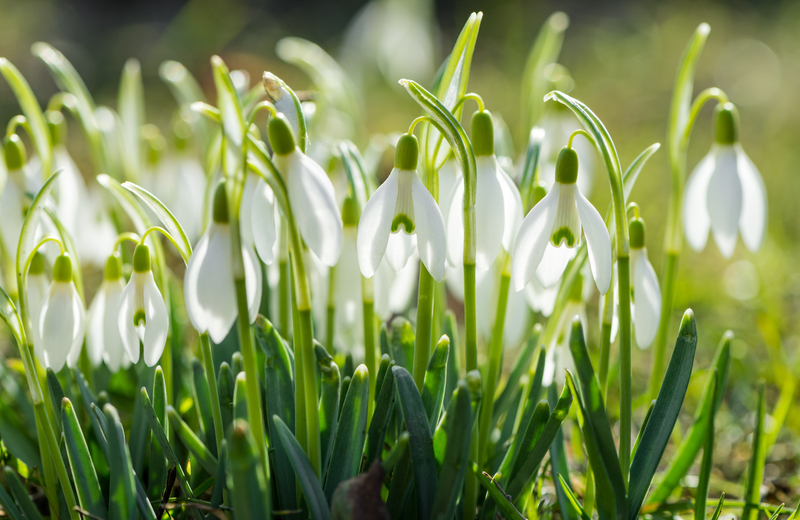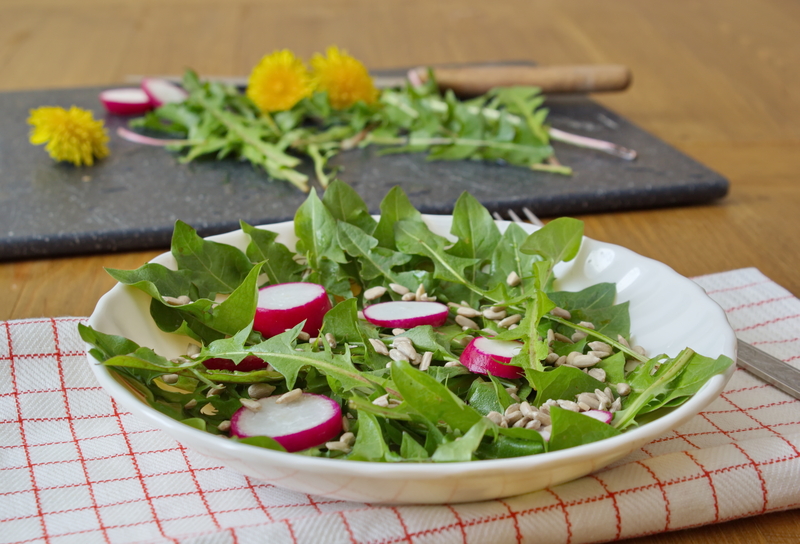Innovative Hedge Trimming: Crafting Captivating Shapes and Techniques
Posted on 04/09/2025
Hedge trimming has evolved far beyond the simple act of maintaining tidy garden borders. In today's landscaping world, innovative hedge trimming is an exciting practice that transforms plain green walls into dynamic, living sculptures. From modern garden design to classic elegance, this comprehensive guide will explore unique hedge shapes, breakthrough trimming techniques, and professional tips for crafting captivating hedge designs. Whether you're a home gardener or a landscape professional, discover how to take your hedge artistry to the next level.

Table of Contents
- Introduction to Hedge Trimming Innovation
- Essential Tools for Creative Hedge Shaping
- Captivating Hedge Shapes: Ideas and Inspiration
- Modern Hedge Trimming Techniques
- Expert Tips for Shaping and Maintaining Hedges
- Common Mistakes in Hedge Trimming and Their Solutions
- Eco-Friendly and Sustainable Hedge Design
- Showcase of Innovative Hedge Art Around the World
- Frequently Asked Questions on Creative Hedge Trimming
Introduction to Hedge Trimming Innovation
Gone are the days when hedge trimming meant straight lines and uniform boundaries. Innovative hedge trimming introduces artistry, individuality, and fresh perspectives to landscapes everywhere. By using different species, thoughtfully planning shapes, and bringing in elements of architecture and sculpture, modern hedge techniques allow for striking visual impact.
Why Choose Innovative Hedge Designs?
- Personal Expression: Your garden can reflect your personality and style with customized hedge art.
- Increased Property Value: Unique landscape features make properties stand out.
- Wildlife Benefits: Certain shapes and plantings can benefit local ecosystems and pollinators.
- Year-Round Interest: Dynamic forms create visual intrigue, even in winter.
Essential Tools for Creative Hedge Shaping
To achieve intricate hedge forms and professional results, starting with the right tools is crucial. Tools for innovative hedge sculpting are designed for precision, safety, and versatility.
Basic and Advanced Trimming Tools
- Hand Shears: Best for smaller hedges and detailed work.
- Electric or Battery-Powered Trimmers: Ideal for larger or denser plantings, some models offer adjustable blades for fine shaping.
- Topiary Frames: Metal or plastic forms that guide the growth and trimming of hedges into complex shapes.
- Ladders and Telescopic Handles: Ensure safe access for tall or deep sculptures.
- Template Boards: Cardboard or plywood cutouts that serve as stencils for symmetrical curves or patterns.
- Measuring Tape & Chalk Line: For exact sizing and planning before actual cutting begins.
Remember: sharp, clean tools reduce plant stress and result in neater cuts.
Captivating Hedge Shapes: Ideas and Inspiration
Daring to dream beyond basic rectangles unlocks an entire world of innovative hedge designs. Below are some popular and advanced forms that impress and intrigue.
Classical Topiary Forms
- Globes and Spheres: Perfect round shapes symbolize harmony and order.
- Cubes and Obelisks: Strong, architectural presence with clean lines.
- Spirals and Corkscrews: Eye-catching and dynamic, requiring careful guidance and technique.
Modern and Abstract Hedge Art
- Waves: Undulating patterns conveying movement across garden spaces.
- Geometric Panels: Boxes, rectangles, or polygons for a contemporary look.
- 3D Sculptures: Animals, mythical creatures, or custom logos--limitless possibilities with proper planning.
- Living Mazes and Labyrinths: Both functional and decorative, offering interactive spaces.
- Naturalistic Organic Forms: Mimicking hills, clouds, or abstract landscapes for a softer touch.
Edible and Functional Hedges
- Fruit-Bearing Hedge Patterns: Shaping currants, blueberries, or espaliers for both beauty and harvest.
- Privacy Screens: Combining innovative form with practical screening from neighbors or roads.
- Windbreaks with Style: Dynamic forms that disrupt wind but add aesthetic value.
The only boundary to creative hedge trimming is your imagination!
Modern Hedge Trimming Techniques
Understanding contemporary hedge pruning strategies allows you to sculpt living artwork and ensure enduring garden health. Here we outline the key methods for innovative hedge maintenance.
Step-by-Step Guide to Artistic Hedge Trimming
- Preparation and Planning
- Research desired shapes and plant species suitable for tight trimming (e.g., boxwood, yew, privet).
- Sketch your design or use a photo editor for visual reference.
- Assess plant health--only work with vigorous, disease-free material.
- Shaping the Outline
- Mark boundaries with twine, chalk, or template boards.
- Start with broad cuts to achieve an initial outline. Stand back frequently to ensure symmetry.
- Detail Refinement
- Switch to hand shears for intricate areas and curves.
- Use topiary frames if shaping complex forms like animals.
- Regular Maintenance
- Trim new growth two to four times per year depending on species and desired precision.
- Annual or biannual re-shaping may be needed for abstract forms.
Advanced Hedge Artistry Techniques
- Layered Shaping: Create hedges at different heights and shapes in a single bed for a multidimensional effect.
- Shadow Play: Utilize bold shapes or negative spaces (holes, cutouts) to cast interesting shadows on ground or structures.
- Incorporating Lights: Conceal garden lights within hedges to enhance forms at night and highlight unique patterns.
- Mixed Plantings: Combine evergreen with deciduous or flowering shrubs to introduce seasonal color and texture shifts.
- Living Fencing: Weave willow, hazel, or hornbeam in patterns for fences that are both functional and decorative.
Expert Tips for Shaping and Maintaining Hedges
Professionals in hedge sculpture and creative hedge artistry rely on time-tested advice for optimal results.
- Always Trim in Dry Weather: Wet foliage leads to ragged cuts and spread of disease.
- Start from the Top Down: This makes handling debris easier and helps maintain balance.
- Angle Side Cuts Slightly Inward: This ensures sunlight reaches all foliage, keeping lower sections lush.
- Clean Your Tools: Disinfect shears and trimmer blades after use to prevent pathogen transfer.
- Feed and Mulch: Strong healthy plants recover best from frequent pruning--apply compost and water regularly.
Common Mistakes in Hedge Trimming and Their Solutions
Even experienced gardeners sometimes encounter issues with innovative hedge shaping. Here's how to sidestep common errors:
- Uneven Lines and Shapes: Stand back often, use templates, and trim a little at a time to correct mistakes early.
- Browning and Sparse Foliage: Avoid stripping the hedge of all outer leaves; retain a balance of new and old growth.
- Irregular Growth: Stick to a precise schedule, and don't rush big changes--a gradual approach gives better results.
- Poor Plant Choice: Use species known for dense, small leaves and quick recovery from cuts (boxwood, yew, holly, privet, myrtle).
- Ignoring Pest and Disease Signs: Address issues promptly to halt damage spreading through prized formations.
Eco-Friendly and Sustainable Hedge Design
Rising environmental awareness is inspiring gardeners to choose sustainable hedge trimming methods:
- Native Species Selection: Favor local plants for reduced water and fertilizer needs.
- Bee-Friendly Designs: Integrate flowering hedges and avoid trimming during nesting or flowering times.
- Compost Trimmings: Return nutrients to your garden and minimize waste.
- Hand Tools Over Power Tools: Lower energy use and noise, especially in small gardens or near wildlife areas.
- Water Conservation: Install drip irrigation at the root zone instead of spraying overhead.
Creative hedge trimming can be both stunning and environmentally responsible!
Showcase of Innovative Hedge Art Around the World
Many globally renowned gardens are celebrated for their remarkable hedge innovations:
- Levens Hall, England: Known for centuries-old topiary dating to the late 17th century, featuring towering spirals and intricate animal forms.
- Gardens of Marqueyssac, France: Maze-like boxwood hedges twist over more than six kilometers, utilizing innovative curves and sculpted patterns.
- Longwood Gardens, USA: Massive yew and boxwood sculptures meld formal tradition with modern geometric patterns.
- Individual Artists: Topiary artists worldwide (like Pearl Fryar and Masahiro Hashimoto) show that innovative hedge art can transform private and public spaces.
Visit local botanic gardens for inspiration, or search for hedge art festivals held in various countries annually.
Frequently Asked Questions on Creative Hedge Trimming
What are the best plants for intricate hedge shapes?
Boxwood, yew, myrtle, privet (Ligustrum), and holly are top choices for artistic hedge trimming due to their dense foliage and tolerance for frequent trimming. Some evergreens like Japanese holly (Ilex crenata) are also favored for their small leaves and adaptability to complex forms.
How often should I trim an innovative hedge design?
The frequency depends on plant species, climate, and the precision required:
- For tight, formal shapes: Trim every 4-6 weeks during the growing season.
- For looser, organic shapes: 2-3 times from spring to late summer may suffice.
- Always avoid trimming during frosts or hot, dry spells.
Can beginners achieve creative hedge designs?
Absolutely! Start small with simple shapes and use frames or templates as guides. As confidence grows, experiment with bolder patterns or mix plant types. There are many online communities and local courses to help you learn innovative hedge trimming as a beginner.
Is hedge art high-maintenance?
While some hedge sculptures need regular upkeep, many creative forms are surprisingly easy to maintain with the right plants and proper training. Choosing slow-growing species and setting a routine ensures your designs remain impressive with minimal stress.

Conclusion: The Living Canvas of Innovative Hedge Trimming
Innovative hedge trimming is truly an art form, fusing horticultural knowledge with creativity. By exploring new shapes, mastering advanced techniques, and prioritizing healthy growth, you unlock endless inspiration and transformative potential in your garden.
Whether crafting playful curves, dramatic sculptures, or living mazes, let your hedge imagination guide you. With passion, patience, and the right tools, anyone can become a hedge artist, enriching both their landscape and community for years to come.

